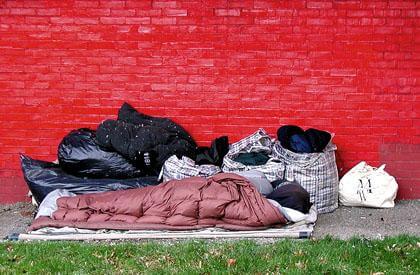By Nathan Duke
Western Queens elected officials said they opposed a state−funded project that would house 50 mentally ill homeless people across the street from Astoria Houses on the grounds that the facility posed safety concerns and would likely impede development in the neighborhood.
The project has been proposed by city nonprofit Urban Pathways and would be primarily funded by the state Mental Health Department, City Councilman Peter Vallone Jr. (D−Astoria) said. The development, which would be located at 27th Avenue and Second Street near Hallets Cove, would be adjacent to Astoria Houses.
“This is a neighborhood that has been struggling to attract development,” Vallone said. “It doesn’t have a bank, a subway or a supermarket. Now, developers are finally becoming interested in the neighborhood and the state wants to cram a mentally ill homeless facility into it. That’s not right.”
Urban Pathways, which operates citywide rehabilitation programs for the homeless, could not be reached for comment.
A spokeswoman for the Mental Health Department said the project would create affordable housing for mentally ill. She said the apartment building would have 50 apartments and staff working at the site around−the−clock.
State Assemblyman Michael Gianaris (D−Astoria) said other attempts to provide shelter for the homeless in western Queens have greatly upset community residents.
He said East Elmhurst’s Westway Motor Inn, at 71−11 Astoria Blvd., caused unrest in the neighborhood after residents complained that homeless people being sheltered at the site would wander the streets at night and cars were broken into.
“When you talk about bringing more facilities like that to the neighborhood, it makes me uncomfortable unless there were a plan to integrate it more smoothly,” Gianaris said.
Vallone said the proposed neighborhood for the project does not have adequate treatment programs or community centers that could assist residents at the facility. He said there is limited bus service in the neighborhood and the closest subways are a long walk from the proposed center.
But Vallone said fighting the creation of the center would be an uphill battle. He said he could not find a single example of a residential community successfully staving off a home for the mentally ill.
“To stop one of these sights, the community has to prove there is over−saturation of these types of facilities in the neighborhood and that the facility would cause a change of character in the neighborhood,” he said. “It’s a Catch−22 because, if there is over−saturation, you are not changing the character of the neighborhood and if not, then you are not over−saturated.”
Reach reporter Nathan Duke by e−mail at news@timesledger.com or by phone at 718−229−0300, Ext. 156.



































